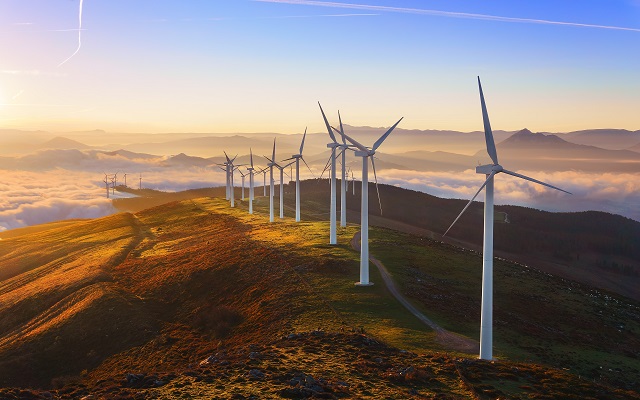
We are experiencing the Fourth Industrial Revolution, where the boundary between the digital and biological worlds is blurred by a fusion of technology and innovation. Building on the Third Industrial Revolution, which automated production through electronics and information technology, the Fourth is disrupting every industry in the world – and the environmental protection industry is no exception. Big data has been one of the buzz terms in the current Revolution, and organizations around the world have been leveraging its versatility to pursue green initiatives to protect our planet.
Big data has limitless potential. When it comes to environmental protection, big data plays an important role in saving labor and time. Compared to data collected manually by scientists, big data can be collected more efficiently and provides richer insights. Here are a few interesting examples of big data being used in the green technology industry.
One of the world's largest turbine companies, Vestas, possesses vast amounts of data collected over the last two decades. Given that big data is not valuable until it is utilized, Vestas became an early adopter of big data analysis in the field of renewable energy.
Vestas installed sensors in turbines which monitored rotational speed, vibrations, temperatures, oil pressure filters, etc. For its latest model of turbines, up to 1,000 sensors have been installed, transmitting real-time data that is analyzed to help optimize product development and turbine performance, as well as service and maintenance.
By taking advantage of big data and analytics, Vestas has been able to increase the effectiveness of wind power to provide clean and sustainable energy. For example, big data and analytics helped Vestas’ lost production factor1 to reach 4.4 percent in 2016, which is almost four times greater than the figure in 2015, while the industry average is 3.6 percent. According to Vestas, this translates into savings of €150 million for its customers.
Two years ago, industrial giant Siemens established a remote diagnostics center located at its global wind service headquarters in Denmark, aiming to monitor big data collected from more than 7,500 Siemens wind turbines set up worldwide.
The remote diagnostics center increases energy output by reducing the time of trouble-shooting onsite and the number of visits by experts and service teams. Siemens uses vibration diagnostics and data analysis to find signs of potential malfunctions which need to be fixed.
In fact, according to Siemens, 97% of common failures can be identified and dealt with before severe damages happen. 85% of unexpected deviations can be analyzed and evaluated so that turbines can be safely restarted remotely without sending the problems to the service team2 .
1 Lost production factor is a variable defined as the electricity production generated if the turbine is operating when the wind is blowing
2http://www.energy.siemens.com/us/en/services/renewable-energy/wind-power/remote-diagnostics.htm" style="color:blue;text-decoration:underline">http://www.energy.siemens.com/us/en/services/renewable-energy/wind-power/remote-diagnostics.htm
In 2013, Conservation International (CI) launched Earth Insights with HP to protect the biodiversity of threatened species in tropical forests using big data. Big data represents an advance over traditional ways of collecting data from tropical forests, which involved scientists travelling to remote regions to study species in person, a time consuming and inefficient process.
CI uses HP’s Vertica Analytics Platform to monitor and analyze the data collected by camera traps installed in the tropical forests at 16 sites across 15 countries. The system delivers massive volumes of data on trends, tropical forest health and early warnings of endangered species for conservation efforts.
According to CI, more than three terabytes of data have been collected from two million camera traps equipped with four million climate sensors. The analytic platform has analyzed data nine times faster than previous methods. With big data and its efficiency, scientists have been able to detect ecological changes in practically real time and respond proactively to environmental threats as they emerge.
Not only does big data help make businesses more profitable, but it also helps to make our world a better place. Big data can improve profitability by providing insights to make production processes more efficient, and at the same time this improved efficiency contributes to less waste or pollution thereby leading to a more environmentally friendly outcome. As technology continues to play an indispensable role in our lives, there’s no reason not to use technology in conjunction with big data to make a positive difference to our planet.

2,593 posts | 790 followers
FollowAlibaba Cloud Community - June 16, 2022
Alibaba Developer - April 18, 2022
Alibaba Clouder - September 11, 2018
Alibaba Cloud Community - November 22, 2021
Clouders - June 17, 2022
Alibaba Clouder - January 4, 2017

2,593 posts | 790 followers
Follow Big Data Consulting for Data Technology Solution
Big Data Consulting for Data Technology Solution
Alibaba Cloud provides big data consulting services to help enterprises leverage advanced data technology.
Learn More Big Data Consulting Services for Retail Solution
Big Data Consulting Services for Retail Solution
Alibaba Cloud experts provide retailers with a lightweight and customized big data consulting service to help you assess your big data maturity and plan your big data journey.
Learn More ApsaraDB for HBase
ApsaraDB for HBase
ApsaraDB for HBase is a NoSQL database engine that is highly optimized and 100% compatible with the community edition of HBase.
Learn More Financial Services Solutions
Financial Services Solutions
Alibaba Cloud equips financial services providers with professional solutions with high scalability and high availability features.
Learn MoreMore Posts by Alibaba Clouder